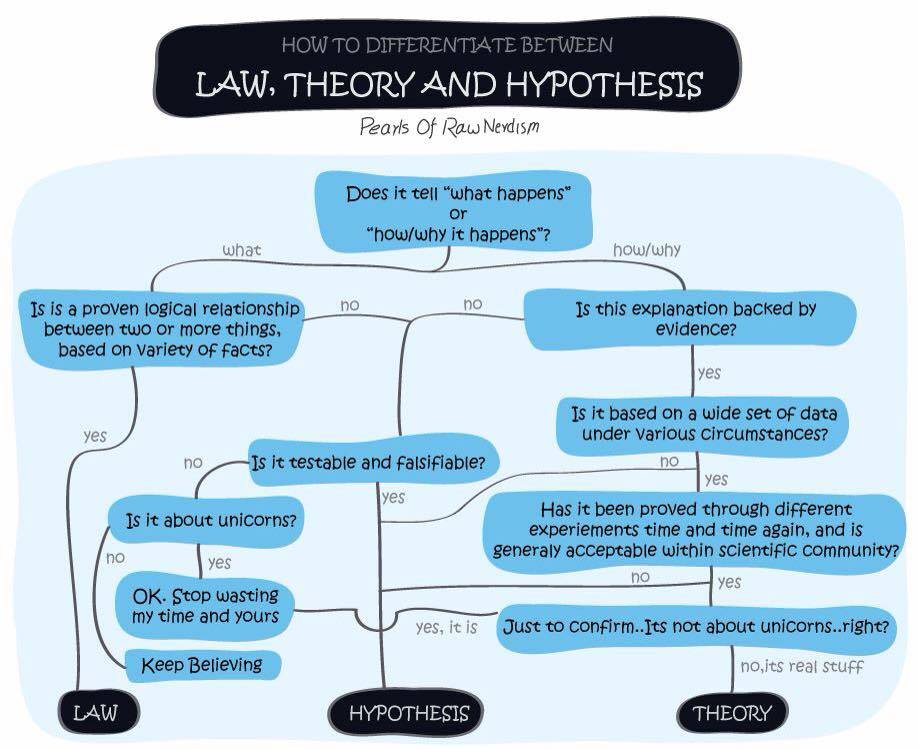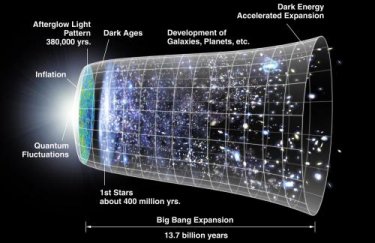*UPDATE 11 Feb: We originally called this a theory, which was incorrect due to the lack of evidence. We've now edited this to hypothesis and model throughout. Apologies for the error, guys.*
A new quantum equation suggests that the Universe has no beginning or end, and it could also account for dark matter and dark energy.
Researchers have created a new model that applies our latest understanding of quantum mechanics to Einstein's theory of general relativity - and according to their calculations, the Universe may have been going forever.
It's currently widely accepted that the Universe is around 13.8 billion years old, and before that everything in existence was squished into a tiny point - also known as the singularity - which was so infinitely dense that we can't see anything before it. From there it famously exploded into a " Big Bang".
This hypothesis was derived from the mathematics of general relativity, but scientists have one big issue with it - it only explains what happened immediately after the Big Bang, not what happened during or immediately before it.
"The Big Bang singularity is the most serious problem of general relativity because the laws of physics appear to break down there," co-creator of the new model, Ahmed Farag Ali from Benha University and the Zewail City of Science and Technology, both in Egypt, told Lisa Zyga from Phys.org.
Working with Sauya Das at the University of Lethbridge in Alberta, Canada, Ali has now managed to resolve the issue by creating a new model in which the Universe is infinite, and the Big Bang singularity never occurred - although it still expanded from a far denser form.
This model was created using updated quantum equations and trajectories, and it also doesn't predict a "big crunch", when the Universe collapses in on itself a condenses to that dense point once more. Which, we guess, is pretty good news when you think of the alternative.
The physics behind the quantum corrections is pretty intense, but, basically, the researchers updated several equations and replaced the notion of geodesics, the curved paths that particles will move along when they're only under the influence of gravity, with quantum trajectories. And unlike classical geodesics, which cross at points of singularity, these quantum trajectories never intersect.
Importantly, the model, which has been published in Physics Letters B and arXiv, also gives the Universe new constants and explains why it's not shrinking as the current model predicts.
Zyga explains over at Phys.org:
"In cosmological terms, the scientists explain that the quantum corrections can be thought of as a cosmological constant term (without the need for dark energy) and a radiation term. These terms keep the Universe at a finite size, and therefore give it an infinite age. The terms also make predictions that agree closely with current observations of the cosmological constant and density of the Universe."
According to the new model, the Universe is filled with a quantum fluid, which might be composed of gravitons - hypothetical particles that have no mass and mediate the force of gravity. A related paper, co-written by Das, also supports the hypothesis, by showing that gravitons can, in theory, form a Bose-Einstein condensate at the temperature of the Universe.
However, this isn't the only new hypothesis about the Universe's origins. Another recent model proposed that the Big Bang singularity created two parallel universes, one moving forward in time and one moving backward.
The physicists now need to analyse their model more rigorously in order to work out if it holds true for all of our growing knowledge of quantum mechanics, but for now they're quietly confident.
"It is satisfying to note that such straightforward corrections can potentially resolve so many issues at once," Das told Zyga.
*UPDATE 11 Feb: We originally called the results of this untested model a theory, which was incorrect due to the lack of evidence. We've now edited this to hypothesis and model throughout. Apologies for the error, guys.*
Despite the typos, we found this flowchart a pretty good reminder of the differences, via Pearls of Raw Nerdism.
 Pearls of Raw Nerdismearls of Raw Nerdism
Pearls of Raw Nerdismearls of Raw Nerdism
Source: Phys.org
